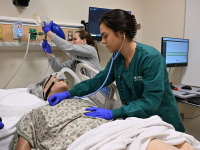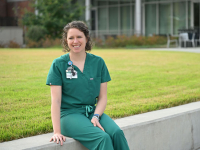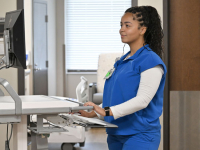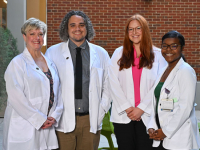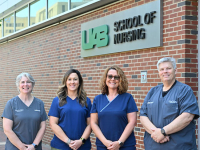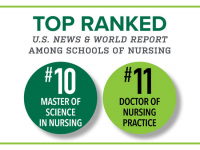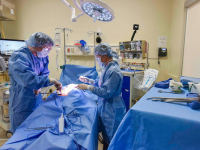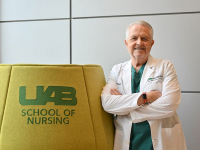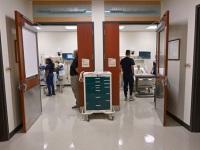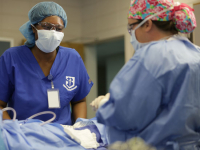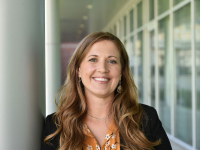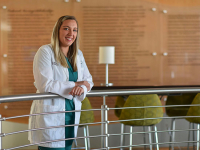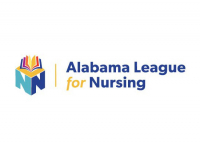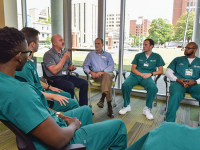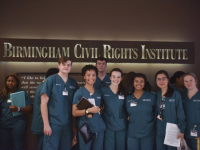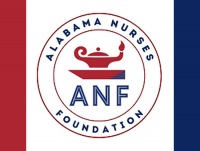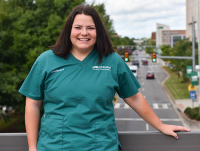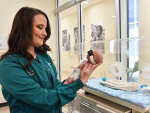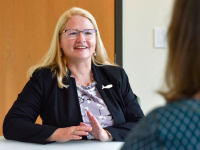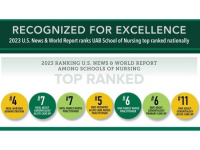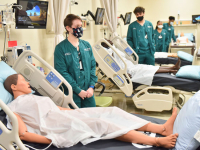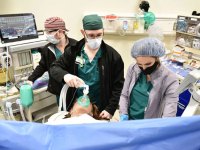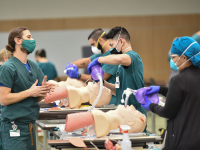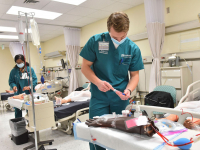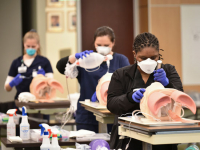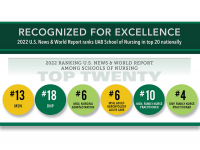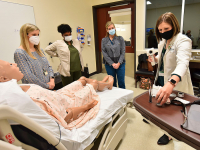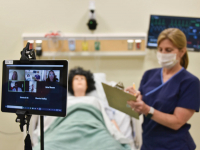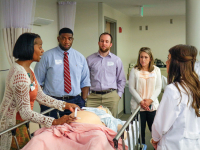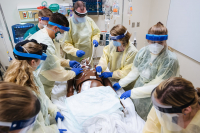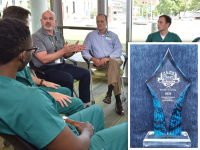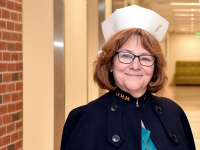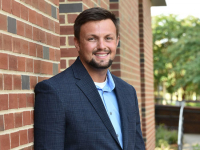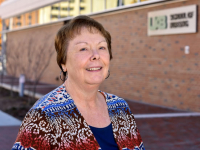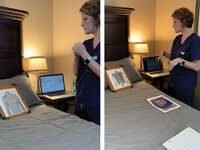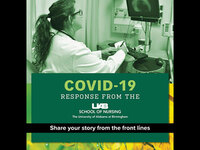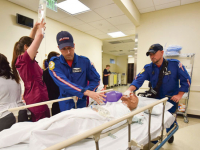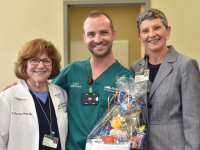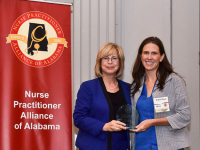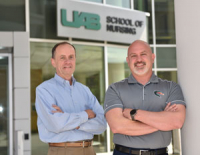 The importance of quality and safety education is evident in the number of persons who experience medical errors. Each year, hundreds of thousands of people die from potentially preventable errors in health care, according to the Institute for Healthcare Improvement. As technological advancements continue and health care grows increasingly complex, the potential for error increases as well.
The importance of quality and safety education is evident in the number of persons who experience medical errors. Each year, hundreds of thousands of people die from potentially preventable errors in health care, according to the Institute for Healthcare Improvement. As technological advancements continue and health care grows increasingly complex, the potential for error increases as well.
University of Alabama at Birmingham School of Nursing quality and safety faculty experts have incorporated principals of improving patient safety at all levels of the School’s curriculum and continue to make that education as robust as possible.
“Quality and safety are imperative to making our population healthier and our health care affordable,” said Associate Professor and Director of Educationally Focused Partnerships Rebecca Miltner, PhD, RN, CNL, NEA-BC. Miltner is an expert in quality improvement science and has been honored by leading national organizations for her innovations and scholarly work in quality and safety education for nursing and other members of the health team. “Saying it is very different from doing it, however, and the process of making health systems safer is complicated. It is something we have to work at every single day, making sure to embed improvement across programs and partnerships.”
Quality and safety education for nurses are integrated in didactic content from prelicensure to graduate and doctoral levels, and the School also impacts quality care and safety through improvement projects at local hospitals, nurse-managed clinics and well-funded research.
“We know there is so much as a School we can impart to the health care professionals in Alabama and the Deep South regarding the importance of being proficient in quality and safety principles,” said Professor and Rachel Z. Booth Endowed Chair in Nursing Pat Patrician, PhD, RN, FAAN. Patrician studies the delivery of nursing care and factors that improve or limit high quality nursing and has received numerous extramural funds to study the work of nursing “Through preparing nursing students and nurse educators, we take steps toward providing all nurses with the knowledge and skills to help continuously improve the quality and safety of the health care systems in which they practice.”
The School, its students, clinical partners and ultimately the community benefit from the prominent, nationally recognized quality and safety experts on faculty, including Patrician and Miltner, along with Assistant Professor and Assistant Dean for Clinical Innovation Shea Polancich, PhD, RN.
Miltner and Patrician sit on the Quality and Safety Education for Nurses (QSEN) Strategic Advisory Board, where they work with other national leaders to address the challenges of preparing futures nurses to lead improvements within health care systems. They also lead the Deep South QSEN Regional Collaborative, which aims to train nurse educators, practicing nurses and nurse leaders on the importance of instilling quality and safety knowledge, skills and attitudes.
As a practicing quality and safety leader for the last 15 years, Polancich brings to the School her experience of entering health systems, identifying problems and developing solutions. This work opens the door for faculty nurse scientists, she said, while improving care. It also provides examples of why quality improvement is a vital part of practice rather than an added skillset.
“UAB School of Nursing is in the top tier of programs because of the number of faculty with true quality and safety expertise and real-world experience,” Miltner said. “We are able to map out program content, and if there is a gap of quality improvement, our quality and safety experts are able to guide faculty on how to implement and apply principles of quality and safety.”
“Nurses are positioned to activate change in health systems because the theory and content behind nursing education involves art and science,” Polancich said. “Nurses are already encouraged to bring together science and the art of caring, creativity and innovation. No matter your practice, you should implement improvement practices because they are tools to make your work better and to ensure we’re taking the best approaches to care.”
The School’s educational innovations in quality and safety don’t not stop with students. The School also has a one-year Faculty Quality Improvement Scholars fellowship in which Doctor of Nursing Practice (DNP) faculty work with quality and safety faculty to develop improvement and implementation knowledge and skills.
“The goal is to help our DNP faculty to establish and grow their own scholarship around clinical improvement so they are better prepared to assist DNP students in quality and safety improvement work,” Miltner said. “Through the yearlong fellowship, faculty have formal training that covers improvement science, quality improvement tools, patient safety issues and QSEN competencies. By ‘teaching the teacher,’ we ensure that our DNP graduates have a foundation of quality and safety education, which positively impacts care and health systems.”
UAB is also one of nine national sites for the Veterans Affairs Quality Scholars Fellowship (VAQS) Program, one of the first interprofessional, post-doctoral fellowships in the country. The two-year program focuses on implementation science and leadership in quality and safety, as well as teamwork and collaboration.
“It is expected that the fellows will have a lot of scholarship that will come out of it, as they write, publish and develop their work,” said Miltner, who as an alumna of the program saw that scholarship success. “This is developing the future leaders of implementation science.”
Patrician said at the end of the day, the ultimate goal of everything the faculty experts are doing around quality and safety is to not only develop innovative solutions, but also to incorporate those into practice.
“When you ask nurses about quality and safety, they will often say ‘That’s everything we do,’” Patrician added. “But if you ask them about changes in practice based on evidence they’ve seen, research literature they have read, or patient-care issues they have discussed with their colleagues, you find gaps in how they incorporate the evidence in practice. We want to change that. As quality improvement leader, Paul Batalden, once said, “Our job [in health care] is not only to do our work, but also to improve our work.”

